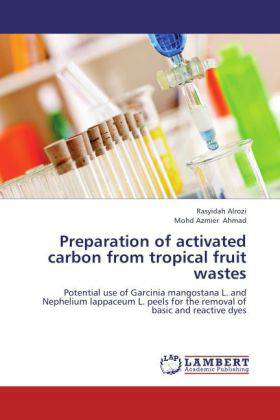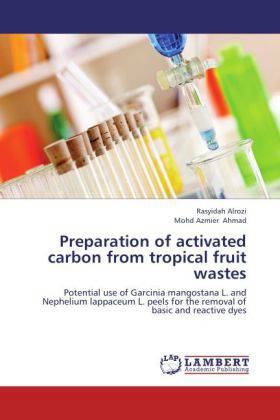
- Afhalen na 1 uur in een winkel met voorraad
- Gratis thuislevering in België vanaf € 30
- Ruim aanbod met 7 miljoen producten
- Afhalen na 1 uur in een winkel met voorraad
- Gratis thuislevering in België vanaf € 30
- Ruim aanbod met 7 miljoen producten
Zoeken
Preparation of activated carbon from tropical fruit wastes
Potential use of Garcinia mangostana L. and Nephelium lappaceum L. peels for the removal of basic and reactive dyes
Rasyidah Alrozi, Mohd Azmier Ahmad
Paperback | Engels
€ 96,45
+ 192 punten
Omschrijving
Due to the high quantities of water used in the dyeing processes, textile industry has become one of the greatest sources of liquid effluent that contaminated with various kinds of dyes. The liquid effluent may cause serious water pollution problems and it requires solutions.However, commercially available activated carbons are still considered expensive due to the use of non-renewable and relatively expensive starting material such as bituminous coal. Therefore, this study investigates the potential use of tropical fruit wastes such as mangosteen (Garcinia mangostana L.) peel and rambutan (Nephelium lappaceum L.) peel that available in Malaysia, as the precursor for the preparation of activated carbon which can be applied for the removal of basic Malachite Green and reactive Remazol Brilliant Blue R dyes from aqueous solution. Optimum activated carbon preparation conditions were determined using response surface methodology. The activated carbons prepared were characterized to study their respective physical and chemical characteristics. Isotherms, kinetics and thermodynamics for adsorption of basic and reactive dyes were investigated by batch adsorption test.
Specificaties
Betrokkenen
- Auteur(s):
- Uitgeverij:
Inhoud
- Aantal bladzijden:
- 272
- Taal:
- Engels
Eigenschappen
- Productcode (EAN):
- 9783848488469
- Verschijningsdatum:
- 30/07/2012
- Uitvoering:
- Paperback
- Afmetingen:
- 152 mm x 229 mm
- Gewicht:
- 404 g

Alleen bij Standaard Boekhandel
+ 192 punten op je klantenkaart van Standaard Boekhandel
Beoordelingen
We publiceren alleen reviews die voldoen aan de voorwaarden voor reviews. Bekijk onze voorwaarden voor reviews.








